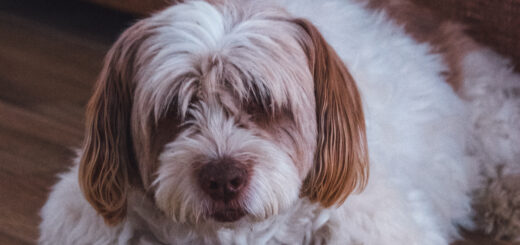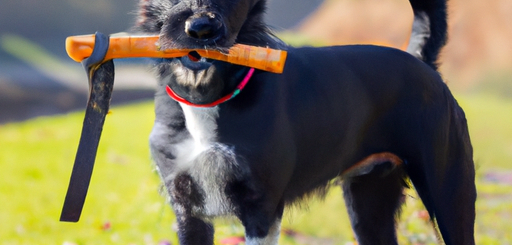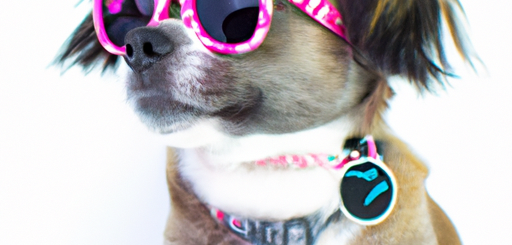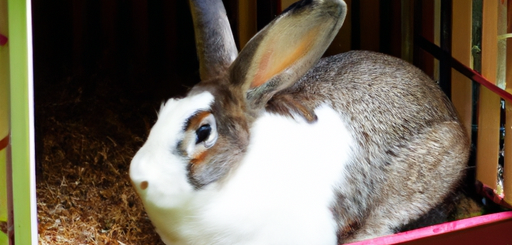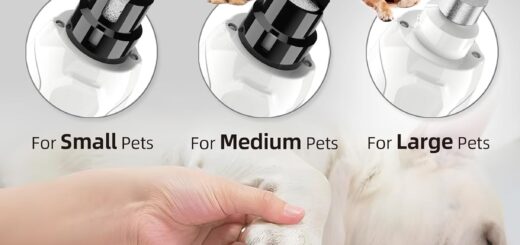Grooming 101: Tips For Keeping Your Dog’s Coat Healthy And Clean
Keeping your dog’s coat healthy and clean is essential for their overall well-being. Regular grooming not only helps to manage their fur but also promotes good hygiene and prevents potential skin issues. In this article, you will find useful tips and techniques to ensure that your furry friend’s coat stays in optimal condition. From brushing and bathing to trimming and nail care, we will guide you through all the necessary steps to keep your dog looking and feeling their best.

This image is property of images.pexels.com.
Importance of Regular Grooming
Regular grooming is essential for keeping your dog’s coat healthy and clean. Not only does it make your furry friend look their best, but it also has numerous benefits for their overall well-being. Let’s explore some of the reasons why regular grooming is so important.
Prevent Matting and Tangles
One of the primary reasons for regular grooming is to prevent matting and tangles in your dog’s coat. Dogs with longer hair or thick fur are especially prone to these issues. Matting can be painful for your dog and can lead to skin irritations or even infections if left untreated. By regularly brushing your dog’s coat, you can prevent the formation of matting and tangles, keeping their fur smooth and knot-free.
Promote Healthy Skin and Coat
Regular grooming not only keeps your dog’s coat looking beautiful but also promotes a healthy skin and coat. Brushing helps distribute natural oils throughout your dog’s fur, which keeps it moisturized and prevents dryness or flakiness. Additionally, the stimulation from brushing improves blood circulation to the skin, promoting its overall health. A healthy skin and coat are not only aesthetically pleasing but also contribute to your dog’s comfort and well-being.
Early Detection of Skin or Health Issues
Another crucial benefit of regular grooming is the early detection of skin or health issues. By routinely inspecting your dog’s skin and coat, you can identify any abnormalities or changes that may indicate an underlying problem. From rashes and hotspots to lumps and parasites, regular grooming allows you to catch these issues early, increasing the chances of successful treatment. Your diligent grooming routine could potentially save your dog from unnecessary discomfort and ensure their overall health and happiness.
Choosing the Right Brush for Your Dog
Choosing the right brush for your dog is essential to ensure efficient and comfortable grooming sessions. With the myriad of brush types available, it can be overwhelming to find the perfect one for your furry friend. Here are some factors to consider when selecting a brush for your dog.
Different Brush Types for Different Coat Textures
Not all brushes are created equal, and different coat textures require different brushes. For short-haired dogs, a bristle brush or a rubber grooming mitt can effectively remove loose hair and debris. Dogs with longer hair or thick fur may benefit from a slicker brush or a pin brush, which can reach deeper into the coat to remove tangles. Wire-pin brushes are suitable for dogs with curly or wiry hair, while undercoat rakes are excellent for double-coated breeds that shed heavily. Take into account your dog’s coat texture when selecting a brush to ensure optimum grooming results.
Consider Your Dog’s Sensitivity and Size
Your dog’s sensitivity and size play a significant role in choosing the right brush. Some dogs have more sensitive skin and may require brushes with softer bristles or rubberized tips to prevent any discomfort. Additionally, the size of your dog should also be considered. Smaller dogs may be more comfortable with a smaller brush that is easier to maneuver, while larger dogs may require a brush with a longer handle for better reach. Always prioritize your dog’s comfort when selecting a grooming brush.
Special Brushes for Shedding
If shedding is a concern for you, there are special brushes available that can help minimize the amount of loose hair around your home. Shedding brushes, such as deshedding tools or grooming gloves with rubberized tips, are designed to remove the loose undercoat hair that contributes to excessive shedding. These brushes can help reduce the amount of fur your dog sheds by efficiently removing loose hair before it ends up all over your furniture and clothes. Consider investing in a shedding brush if managing your dog’s shedding is a top priority.
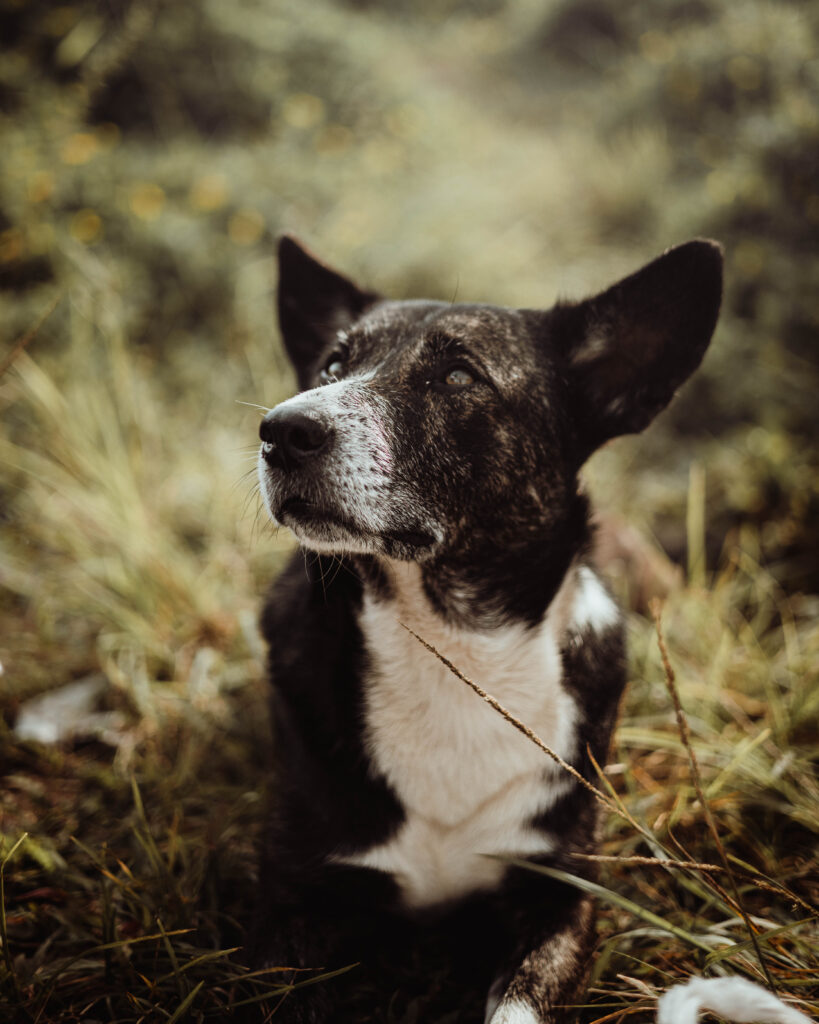
This image is property of images.pexels.com.
Proper Brushing Techniques
Once you have chosen the right brush for your dog, it’s important to use proper brushing techniques to ensure a comfortable and effective grooming session.
Start Slowly and Gently
If your dog is new to grooming or is particularly sensitive, it’s important to start slowly and gently. Begin by offering your dog treats and positive reinforcement to create a positive association with the grooming process. Gradually introduce the brush, starting with short and gentle strokes. As your dog becomes more comfortable, you can gradually increase the duration and pressure of the brushing.
Brush in the Direction of Hair Growth
When brushing your dog’s coat, always brush in the direction of hair growth. This not only helps prevent discomfort or pulling but also ensures that you reach the deeper layers of the coat. Brushing against the hair growth can be painful for your dog and may lead to irritation or tangles. Take your time and work in small sections, ensuring that you brush through the entire length of the hair to maintain a consistent and smooth coat.
Focus on Trouble Spots
Certain areas of your dog’s body, such as the ears, armpits, and tail, are more prone to matting and tangles. These areas require special attention during grooming sessions. Spend extra time brushing these trouble spots, using a comb or slicker brush to gently remove any knots or tangles. By focusing on these areas, you can prevent matting and keep your dog’s coat healthy and free from discomfort.
Don’t Forget the Hidden Areas
While brushing your dog’s body is essential, don’t forget to pay attention to the hidden areas, such as the belly, groin, and paw pads. These areas are often overlooked but can accumulate dirt, debris, and tangles. Regularly check and brush these hidden areas to maintain cleanliness and prevent any discomfort or infections. Your dog will thank you for it!
Bathing Your Dog the Right Way
Bathing your dog is a crucial part of their grooming routine. However, it’s important to do it the right way to ensure a positive experience for both you and your furry friend.
Frequency of Bathing
The frequency of bathing depends on your dog’s breed, activities, and overall hygiene. Dogs with short hair or a naturally clean coat may only require bathing every few months, while dogs with longer hair or a tendency to get dirty may require more frequent baths. It’s important not to over-bathe your dog as it can strip their coat of essential oils and lead to dryness or irritation. Consult with your veterinarian to determine the ideal bathing frequency for your dog.
Using Dog-Specific Shampoo and Conditioner
When bathing your dog, it’s crucial to use shampoo and conditioner specifically formulated for dogs. Human shampoos and conditioners can be too harsh for your dog’s sensitive skin and can cause skin irritations or allergic reactions. Dog-specific products are milder and designed to maintain the pH balance of your dog’s skin. Additionally, there are specialized shampoos and conditioners available for specific skin conditions, such as dryness or allergies. Choose the appropriate products for your dog’s specific needs to ensure a clean and healthy coat.
Proper Water Temperature
The water temperature when bathing your dog is another important factor to consider. Lukewarm water is recommended as it is comfortable for your dog and helps prevent any shock or discomfort. Avoid using hot water as it can burn your dog’s skin and cause unnecessary stress. Test the water temperature with your hand or a thermometer before bathing your dog to ensure it is not too hot or too cold.
Rinsing Thoroughly
One common mistake when bathing a dog is not rinsing thoroughly. Shampoo and conditioner residue left on your dog’s coat can cause skin irritations, itching, or allergies. It’s important to rinse your dog’s coat thoroughly, ensuring that no traces of shampoo or conditioner remain. Take your time and use your hands to help remove any product buildup. Thorough rinsing will leave your dog’s coat clean, soft, and free from any potential irritants.

This image is property of images.pexels.com.
Trimming Your Dog’s Nails
Trimming your dog’s nails is a necessary part of their grooming routine. Keeping their nails at an appropriate length prevents discomfort, reduces the risk of nail breakage, and promotes healthy foot structure. Here are some key points to keep in mind when trimming your dog’s nails.
When to Trim
The frequency of nail trimming depends on your dog’s individual nail growth. Some dogs may require monthly trims, while others may need it more or less frequently. Regularly inspect your dog’s nails and trim them when they get too long. If you hear clicking sounds when your dog walks on a hard floor, it’s a sign that their nails are too long and need to be trimmed. Additionally, if your dog’s nails start curling, it’s essential to trim them to prevent ingrown nails and potential pain.
Choosing the Right Nail Clippers
There are different types of nail clippers available, including guillotine-style clippers, scissor-style clippers, and grinder tools. The type of nail clipper you choose depends on your preference and your dog’s comfort. Some dogs may be more comfortable with a particular style, so it may take some trial and error to find the right one. Ensure that the clippers are sharp and in good condition to prevent any discomfort or nail splitting.
Proper Nail Trimming Technique
Before trimming your dog’s nails, familiarize yourself with the proper nail trimming technique. Gently hold your dog’s paw and extend their nails by applying gentle pressure to the pad. Identify the quick, which is the pink portion within the nail that contains blood vessels and nerves. It’s essential to avoid cutting into the quick, as it can cause bleeding and pain for your dog. Trim a small, conservative portion of the nail at a time, using a steady and controlled motion. If you are uncertain or uncomfortable trimming your dog’s nails, consider seeking professional help from a groomer or veterinarian.
Dealing with Accidental Bleeding
Accidental bleeding can occur if you accidentally cut into the quick while trimming your dog’s nails. If this happens, it’s important to stay calm and act quickly. Apply gentle pressure to the bleeding nail with a clean cloth or cotton ball to help stop the bleeding. You can also use styptic powder or cornstarch to aid in clotting. If the bleeding persists or if you are unsure of what to do, contact your veterinarian for further guidance. Accidental bleeding can be alarming but is generally not a severe issue if addressed promptly.
Cleaning Your Dog’s Ears
Cleaning your dog’s ears is an essential part of their grooming routine and helps prevent ear infections and discomfort. Here’s everything you need to know about keeping your dog’s ears clean and healthy.
Checking for Ear Infections
Regularly checking your dog’s ears for signs of infection is crucial. Redness, swelling, discharge, excessive scratching, or a foul odor may indicate an ear infection. If you notice any of these symptoms, it’s important to consult your veterinarian for a proper diagnosis and treatment plan. Ear infections can be painful for your dog and can lead to more severe complications if left untreated.
Choosing the Right Ear Cleaner
When it comes to cleaning your dog’s ears, it’s important to choose the right ear cleaner. Avoid using cotton swabs or any sharp objects, as they can cause injury to your dog’s delicate ear canal. Look for a gentle, dog-specific ear cleaner that is formulated to dissolve wax and debris without irritating the skin. Consult with your veterinarian for recommendations on the best ear cleaner for your dog’s specific needs.
Proper Ear Cleaning Technique
To clean your dog’s ears, start by gently lifting their ear flap and applying a few drops of the ear cleaner into the ear canal. Massage the base of the ear for a few seconds to help the liquid penetrate and loosen any dirt or wax. Your dog may shake their head, which is normal and helps to remove excess cleaner. Use a clean cotton ball or gauze pad to gently wipe away any visible debris from the ear canal. Avoid going too deep into the ear, as this can cause damage. Repeat the process for the other ear, and remember to reward your dog with treats and praise throughout the process to make ear cleaning a positive experience.
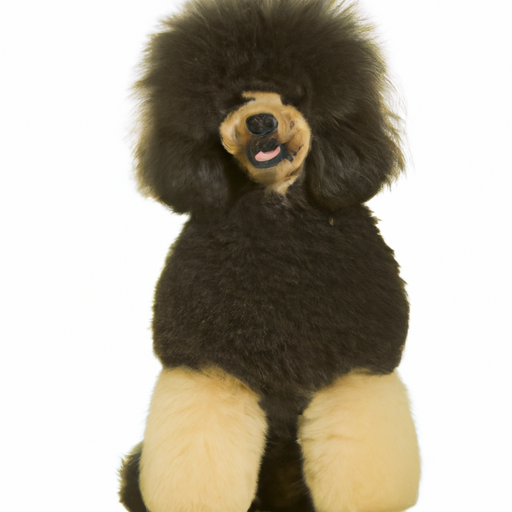
Maintaining a Healthy Smile
Just like humans, dogs require dental care to maintain a healthy smile. Regular brushing, specialized toothpaste, and dental check-ups are all vital components of maintaining your dog’s dental health.
Brushing Your Dog’s Teeth
Brushing your dog’s teeth is the most effective way to remove plaque and prevent dental issues. Use a toothbrush specifically designed for dogs or a finger brush with soft bristles. Apply a small amount of dog-specific toothpaste to the brush and gently brush your dog’s teeth in a circular motion. Pay attention to the gum line and back teeth, as they are often neglected areas. Aim to brush your dog’s teeth at least two to three times a week to maintain optimal oral hygiene. If your dog is resistant to brushing, start slowly and gradually increase the duration and pressure as they become more comfortable.
Using Dog-Specific Toothpaste
It’s crucial to use toothpaste specifically formulated for dogs when brushing their teeth. Human toothpaste contains ingredients that are toxic to dogs, such as fluoride. Dog-specific toothpaste comes in a variety of flavors that are appealing to dogs, making the brushing experience more enjoyable for them. The taste of the toothpaste encourages dogs to lick it off, allowing the toothpaste to reach all areas of the mouth and effectively clean their teeth. Always use dog-specific toothpaste to ensure the safety and well-being of your furry friend.
Regular Dental Check-ups
Regular dental check-ups with your veterinarian are essential for maintaining your dog’s dental health. During these check-ups, your veterinarian will assess your dog’s teeth and gums for any signs of dental disease or abnormalities. They may recommend professional dental cleanings if necessary. Regular dental check-ups can catch dental issues early and help prevent more severe problems in the future. Your veterinarian can also provide guidance on dental care and recommend appropriate dental products for your dog’s specific needs.
Dealing with Shedding
Shedding is a natural process for dogs, but it can be a challenge for some pet owners to manage. Here are some tips for dealing with shedding and keeping your home clean.
Regular Brushing to Minimize Shedding
Regular brushing is key to minimizing shedding in your dog. Brushing helps remove loose hair before it ends up on your furniture and floors, reducing the amount of shedding. For dogs with shorter hair, a rubber grooming mitt or a bristle brush can effectively remove loose hair. Dogs with longer hair or thick fur may benefit from a slicker brush or an undercoat rake to reach the deeper layers of fur. Establish a regular brushing routine based on your dog’s coat type and length to keep shedding under control.
Using Specialized Shedding Tools
If shedding is a persistent issue, specialized shedding tools can help manage the problem. Deshedding tools, such as shedding blades or grooming combs with wider teeth, are designed to remove the loose undercoat hair that contributes to shedding. These tools work by reaching deep into the fur and removing the dead hair that would eventually shed. It’s important to use these tools with caution and follow the instructions provided to prevent any discomfort or skin irritation. Regular use of specialized shedding tools can significantly reduce the amount of loose hair shedding around your home.
Proper Nutrition for Coat Health
Proper nutrition plays a significant role in maintaining a healthy coat and minimizing excessive shedding. Ensure that your dog is receiving a balanced diet that is rich in essential nutrients, including omega-3 fatty acids and biotin, known to promote a healthy coat and reduce shedding. Consult with your veterinarian to determine the best diet for your dog’s specific needs and consider incorporating supplements if necessary. A well-nourished dog will have healthier skin and a coat that sheds less.
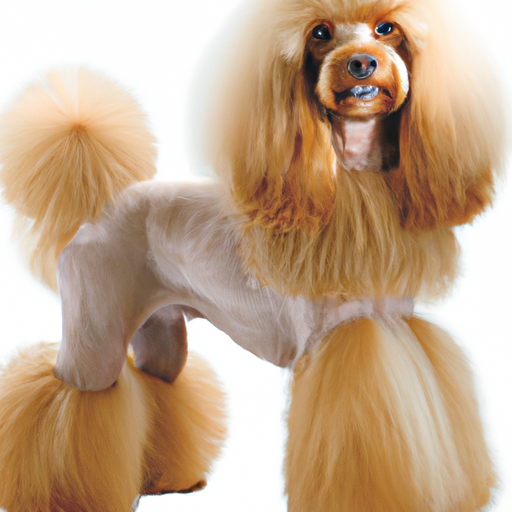
Preventing and Treating Fleas and Ticks
Preventing fleas and ticks is crucial for your dog’s health and comfort. These pesky parasites can cause a range of problems, from skin irritations to transmitting harmful diseases. Here are some effective ways to prevent and treat fleas and ticks.
Using Flea and Tick Preventatives
Using flea and tick preventatives is the most effective way to protect your dog from these parasites. There are various options available, including topical treatments, oral medications, collars, and sprays. Consult with your veterinarian to determine the most suitable preventative for your dog based on their lifestyle, age, and overall health. Follow the instructions provided by the manufacturer and ensure that you consistently apply or administer the preventative as directed to maintain its effectiveness.
Checking Your Dog for Infestations
Regularly checking your dog for fleas and ticks is crucial, even if you are using preventatives. Fleas may still occasionally hitch a ride on your dog, and ticks can find their way onto your dog’s body, despite preventatives. Thoroughly examine your dog’s fur, paying close attention to areas such as the ears, groin, and armpits, where fleas and ticks tend to hide. Look for any signs of parasites or bites, such as redness, itching, or small dark spots. If you notice any fleas or ticks, remove them immediately and consult with your veterinarian for further guidance.
Safe and Effective Tick Removal
If you find a tick on your dog, it’s essential to remove it safely and effectively. Use a pair of fine-tipped tweezers or a specialized tick removal tool to grasp the tick as close to the skin as possible. Apply steady, gentle pressure and pull the tick straight out, making sure to remove the entire tick, including the head. Avoid twisting or jerking motions, as this can cause the tick’s mouthparts to break off and remain in the skin. Once the tick is removed, disinfect the area with an antiseptic and keep an eye on it for any signs of infection. If you are unsure about tick removal or if your dog shows any signs of illness after a tick bite, seek guidance from your veterinarian.
Conclusion and Final Tips
Regular grooming is not only essential for keeping your dog’s coat healthy and clean but also provides an opportunity for bonding and promoting their overall well-being. By following proper grooming techniques, choosing the right grooming tools and products, and observing your dog’s reactions and comfort, you can make grooming an enjoyable and beneficial experience for both you and your furry friend. Remember to be patient, offer positive reinforcement, and seek professional help if needed. By prioritizing regular grooming, you are investing in your dog’s health and happiness. So grab your grooming tools, get ready for some quality time, and keep your dog’s coat healthy and clean!


